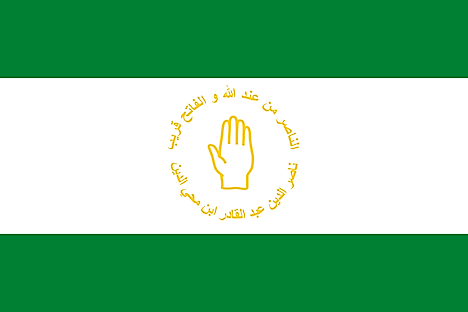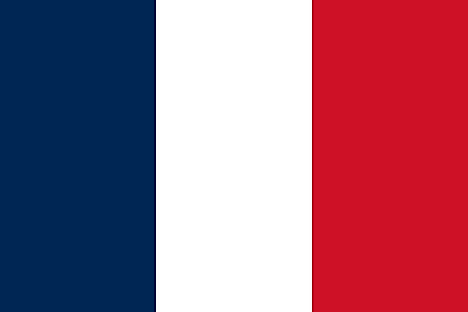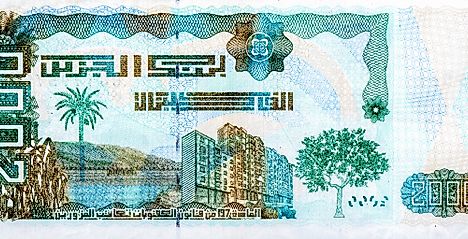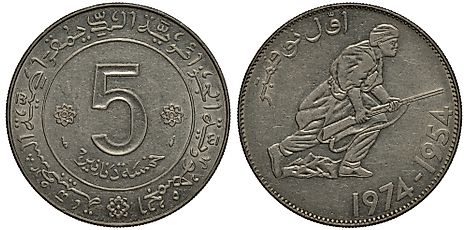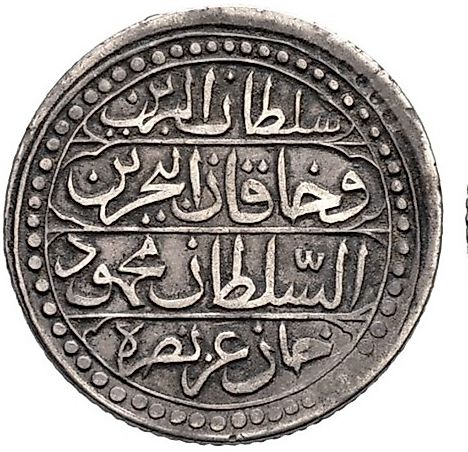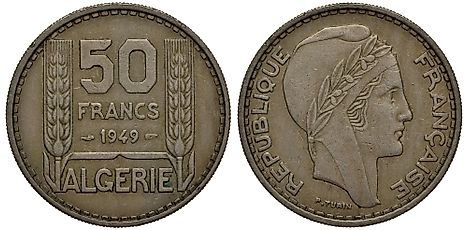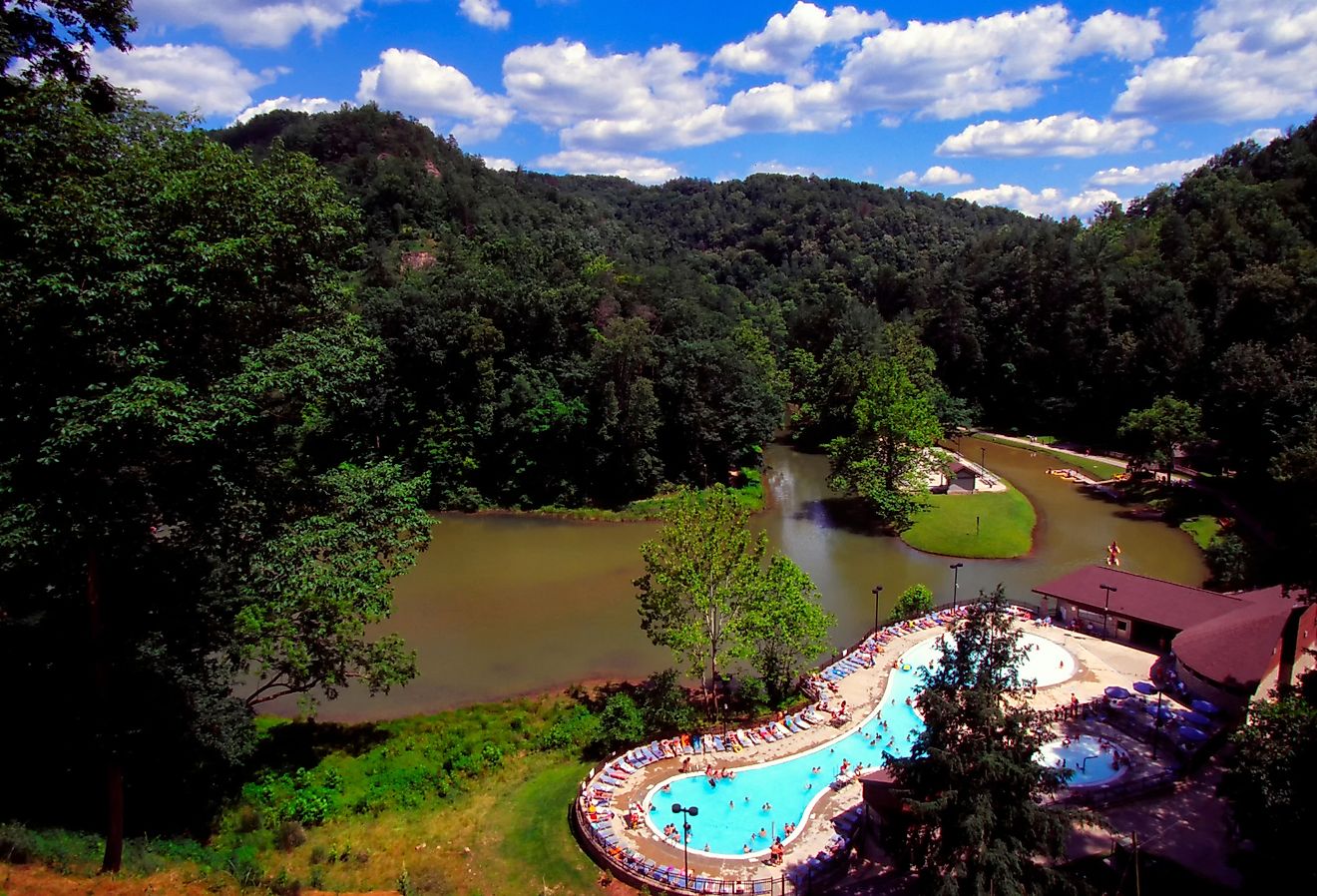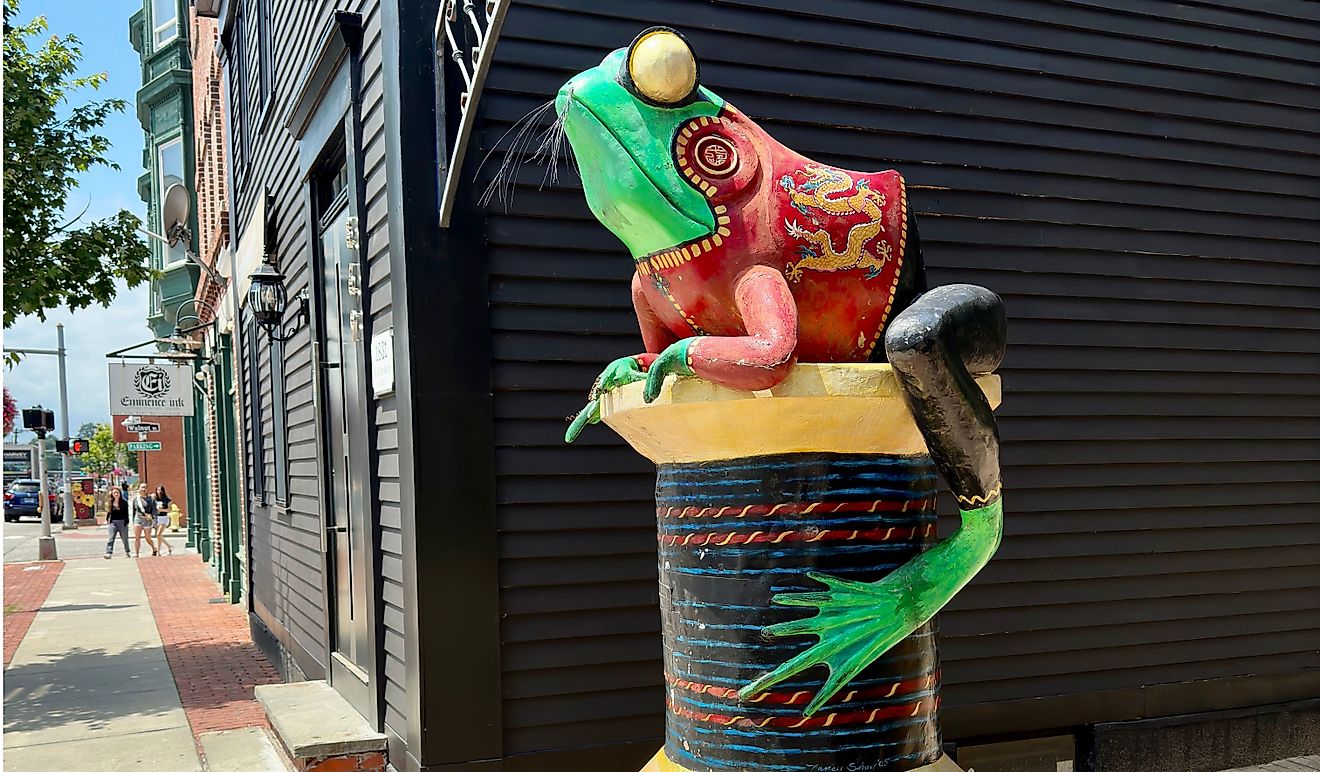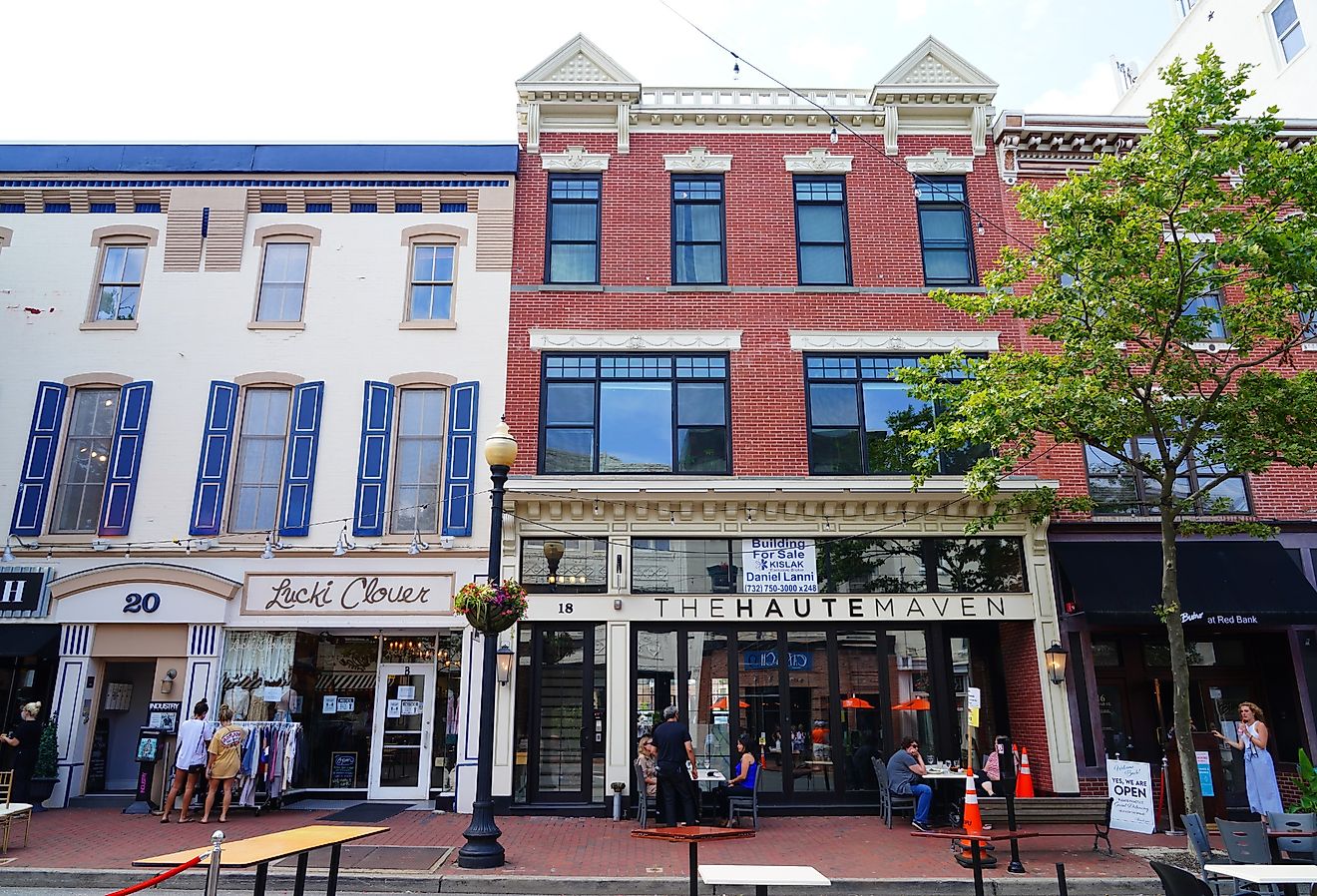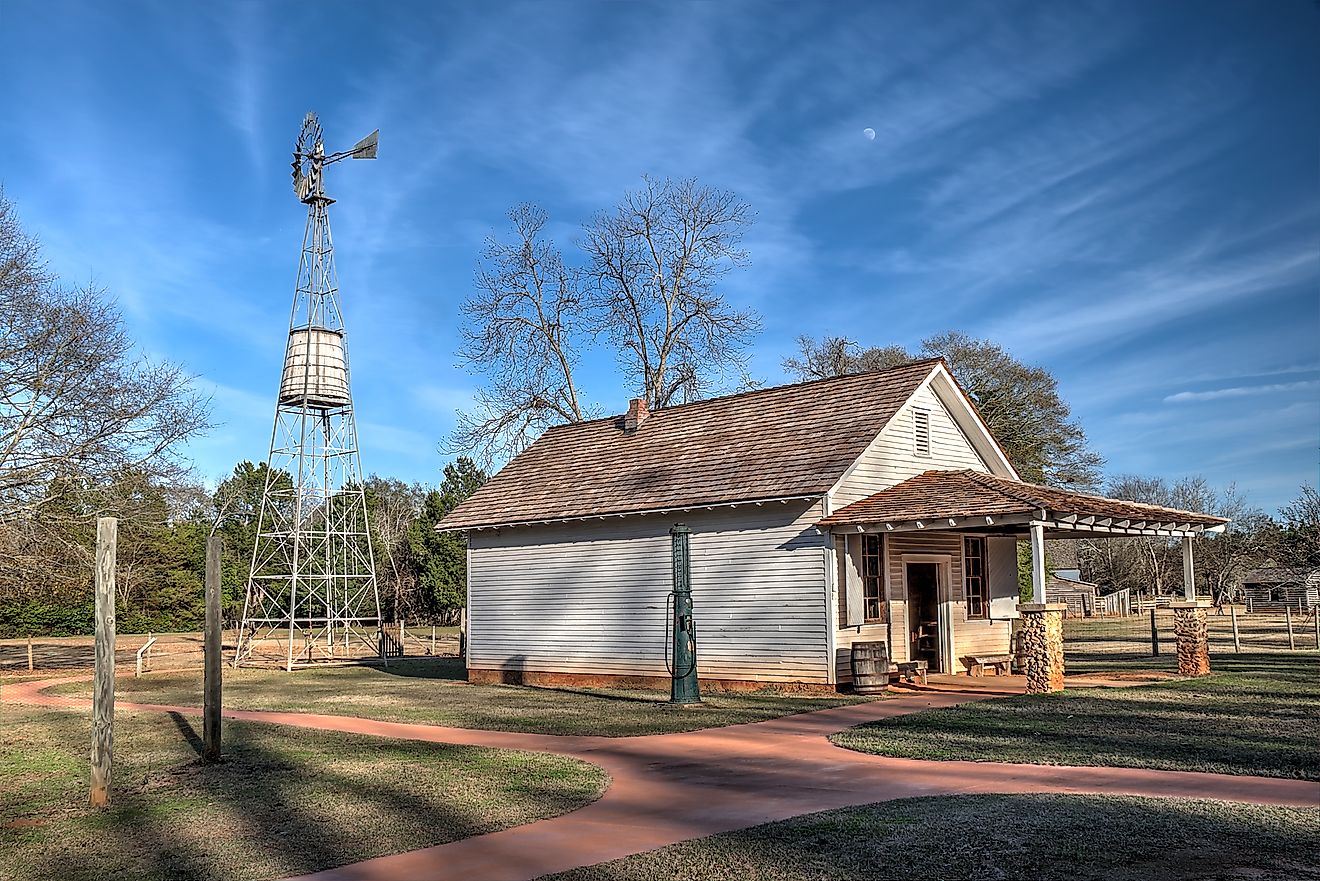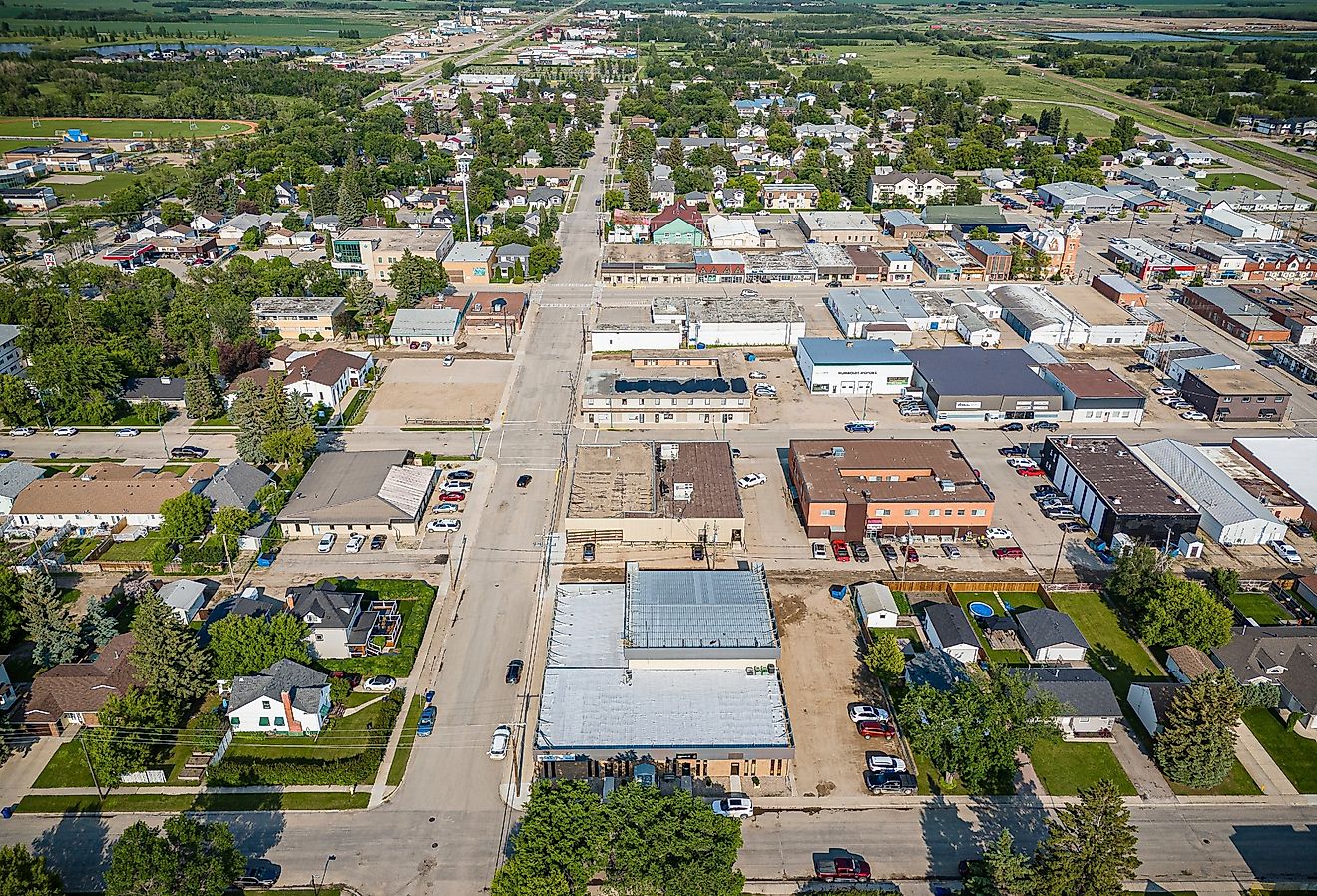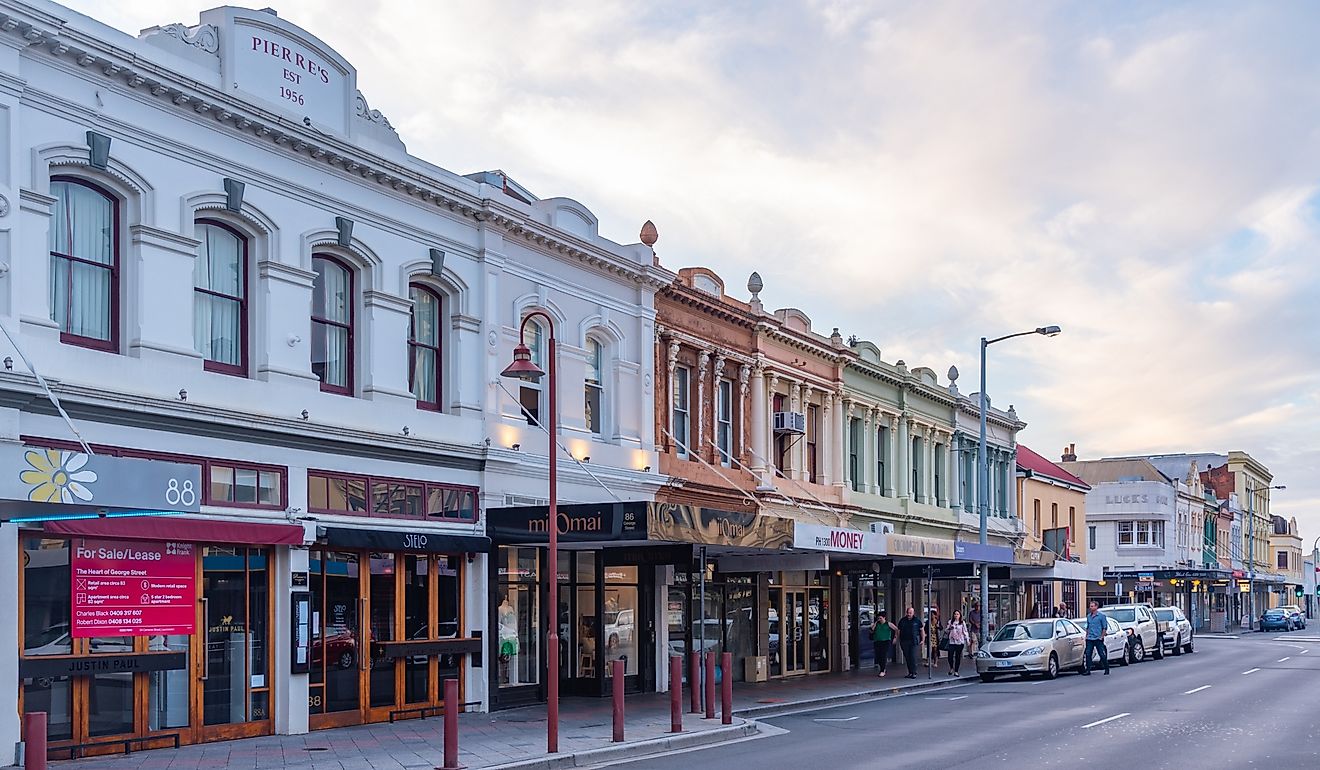Flags, Symbols & Currency of Algeria
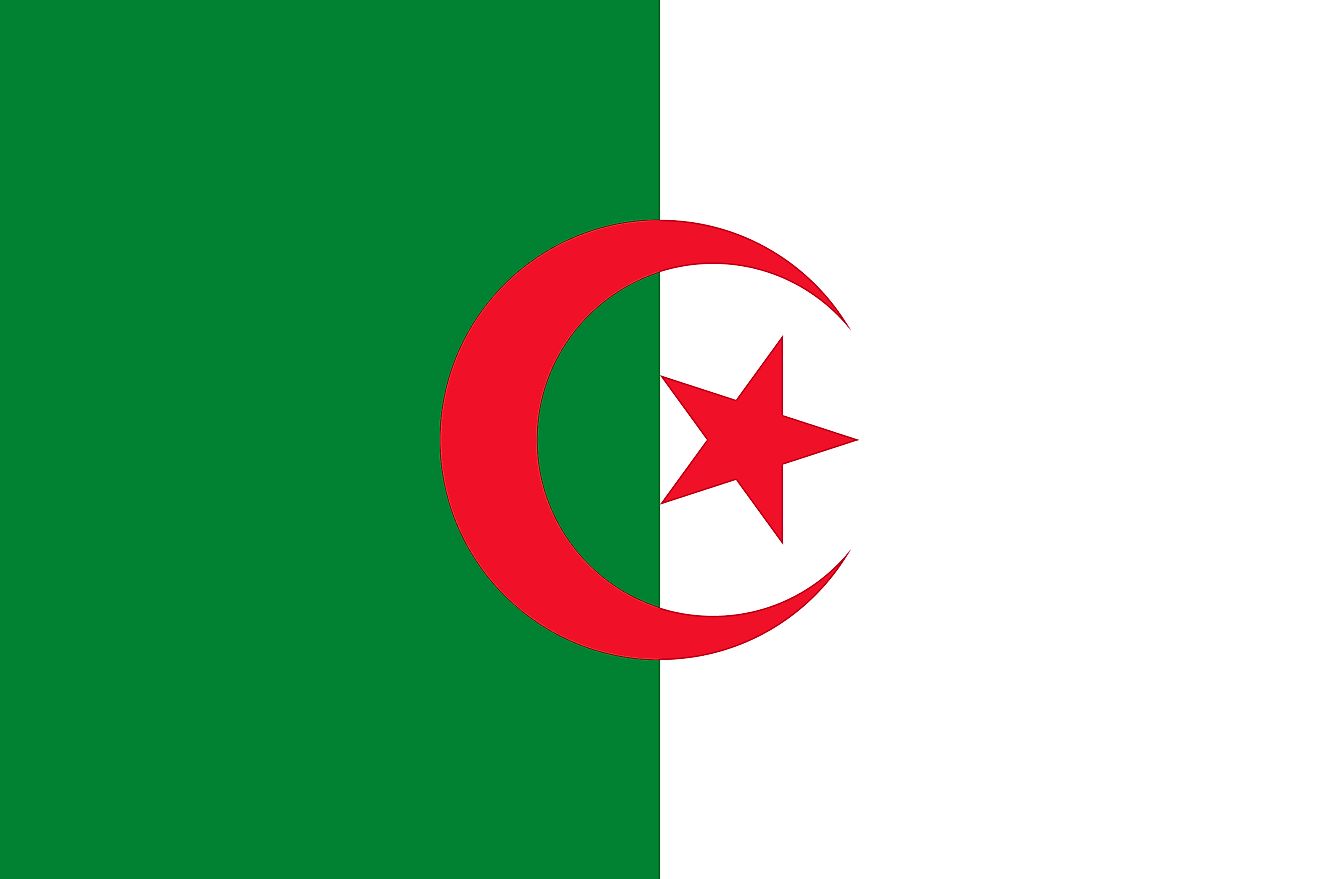
The National Flag of Algeria was officially adopted on July 3, 1962.
The National Flag of Algeria features two equal vertical bands of green (hoist side) and white. A red, five-pointed star within a red crescent is centered over the boundary of the two colors. The green color represents Islam, which is the dominant religion in the region. Green is also said to have been the favorite color of the Prophet Muhammad and his daughter Fatima and is the color of paradise in the Quran. The red color symbolizes freedom and the blood that was shed to attain liberty at the hands of the French in the struggle for independence. The white color represents the purity and peace that was attained after independence. The crescent and the star are also the traditional symbols of Islam, but the crescent is more closed than those of other Muslim countries because the Algerians believe that the long crescent horns bring happiness. The flag has a width-to-length proportion ratio of 2:3.
History of the Flag of Algeria
The Algerian flag dates back to the 11th century during the era of the Berber Dynasties. Each Dynasty had a flag that influenced the successive generations, and the Zayyanid Dynasty had a blue flag with a white crescent. By the time the Ottoman Empire conquered Algeria in 1525, the flag had changed to red with a yellow crescent in the middle. While under Ottoman rule, Algeria unified and remained united until 1830, when the French invaded and upstaged the Ottomans and introduced their blue, white, and red flag as the official flag of the Algerian territory. When the struggle for independence reached its peak, the exiled government of Algeria adopted a green and white flag, but the white band was larger and covered 75% of the flag rather than 50%. This design was inspired by the flag used by Emir Abdel Kadir during the 1920s to represent those who opposed French rule. This version of the flag was used until 1962 when Algeria became an independent state and adopted the current flag.
Symbols of Algeria
The National Coat of Arms of Algeria
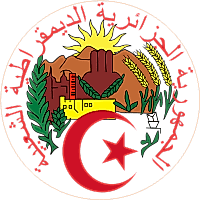
The emblem of Algeria is equivalent to the national coat of arms in other countries and was adopted on November 1, 1976. The emblem features a sun rising from the Atlas Mountains and the cityscape (buildings, oak leaves, olive branches, and a ballot box). The mountains are shaped like the hand of Fatima (a traditional religious symbol) to signify protection. The plants represent the agricultural side of Algeria, while the buildings symbolize the nation’s industry and economy. The traditional Islamic crescent rests below the mountains. The emblem also features an Arabic inscription that says "The People's Democratic Republic of Algeria."
National Motto
"S weyref i weyref." ("By the people and for the people.")
National Anthem
- Anthem Title: "Kassaman"or "Qassaman"
- Music Composer: Mohamed Fawzi
- Lyricist: Moufdi Zakaria
- Date of Adoption: July 5, 1962.
"Kassaman"or "Qassaman" is the national anthem of Algeria. The music of the anthem has been composed by an Egyptian composer named Mohamed Fawzi. The lyrics of the anthem have been authored by Moufdi Zakaria. The anthem was officially adopted on July 5, 1962.
قَسَمًا, (Arabic)
1.
قسما بالنازلات الماحقات
و الدماء الزاكيات الطاهرات
و البنود اللامعات الخافقات
في الجبال الشامخات الشاهقات
نحن ثرنا فحياة أو ممات
و عقدنا العزم أن تحيا الجزائر
فاشهدوا… فاشهدوا… فاشهدوا…
2.
نحن جند في سبيل الحق ثرنا
و إلى استقلالنا بالحرب قمنا
لم يكن يصغى لنا لما نطقنا
فاتخذنا رنة البارود وزنا
و عزفنا نغمة الرشاش لحنا
وعقدنا العزم أن تحيا الجزائر
فاشهدوا… فاشهدوا… فاشهدوا…
3.
يا فرنسا قد مضى وقت العتاب
و طويناه كما يطوى الكتاب
يا فرنسا ان ذا يوم الحساب
فاستعدي و خذي منا الجواب
ان في ثورتنا فصل الخطاب
و عقدنا العزم ان تحيى الجزائر
فاشهدوا… فاشهدوا… فاشهدوا…
4.
نحن من أبطالنا ندفع جندا
و على أشلائنا نصنع مجدا
و على أرواحنا نصعد خلدا
و على هاماتنا نرفع بندا
جبهة التحرير أعطيناك عهدا
و عقدنا العزم أن تحيا الجزائر
فاشهدوا… فاشهدوا… فاشهدوا…
5.
صرخة الأوطان من ساح الفدا
فاسمعوها و استجيبوا للندا
و اكتبوها بدماء الشهدا
و اقرأوها لبني الجيل غدا
قد مددنا لك يا مجد يدا
و عقدنا العزم أن تحيا الجزائر
فاشهدوا… فاشهدوا… فاشهدوا…
"QUASSAMAN": THE PLEDGE
1.
We swear by the lightning that destroys,
By the streams of generous blood being shed,
By the bright flags that wave,
Flying proudly on the high mountains,
That we are in revolt, whether to live or to die,
We are determined that Algeria should live,
So be our witness - be our witness - be our witness!
2.
We are soldiers in revolt for truth
And we have fought for our independence.
When we spoke, nobody listened to us,
So we have taken the noise of gunpowder as our rhythm
And the sound of machine guns as our melody,
We are determined that Algeria should live,
So be our witness - be our witness - be our witness!
3.
Ô France!
Past is the time of palavers
We closed it as we close a book
Ô France!
The day to settle the accounts has come!
Prepare yourself! Here is our answer!
The verdict, our Revolution will return it
We are determined that Algeria should live,
So be our witness - be our witness - be our witness!
4.
From our heroes we shall make an army come to being,
From our dead we shall build up a glory,
Our spirits shall ascend to immortality
And on our shoulders we shall raise the Standard.
To the nation's Liberation Front we have sworn an oath,
We are determined that Algeria should live,
So be our witness - be our witness - be our witness
5.
The cry of the Fatherland sounds from the battlefields.
Listen to it and answer the call!
Let it be written with the blood of martyrs
And be read to future generations.
Oh, Glory, we have held out our hand to you,
We are determined that Algeria should live,
So be our witness - be our witness - be our witness
The Currency of Algeria is the Algerian dinar
The current official currency of Algeria is the Algerian dinar (DZD). The Algerian dinar was adopted on April 1st, 1964. The term dinar is derived from the Roman term “denarius.” During its adoption, one Algerian dinar was made up of 100 subdivisions known as centimes, which is now defunct. The Central Bank of Algeria issued banknotes of the Algerian dinar in 5, 10, and 100 denominations, as well as coins of the Algerian centimes which were minted in 1, 2, 5, 10, 20, and 50 denominations.
Coins
Currently, coins of 5, 10, 20, 50, 100 dinars are in circulation.
Banknotes
The first series of banknotes were in the denominations of 5, 10, 50, and 100 dinars. The 500 dinar notes were added in 1970 and the 1000 dinar notes were added in 1992. The 100 dinar banknote was subsequently replaced by coins. Currently, banknotes in denominations of 200, 500, 1000 dinars are in circulation.
Historical Currencies of Algeria
Before the colonization of Algeria by France in the mid-19th century, the official currency in circulation was the Algerian budju. The budju was made up of 24 subdivisions known as muzuna. The muzuna was further subdivided either into two kharub or 29 aspers. In the period when the budju was the official currency in Algeria, coins were circulated and existed in several denominations including the two asper coin (the lowest existing denomination at the time) and the five asper coin, both of which were minted from copper. Muzuna coins were minted as silver coins and were issued in 3, 4, 6, 8, and 12 denominations. The 1 and 2 budju coins were also minted as silver coins. The sultani was the highest denomination and existed in a quarter, half, and one sultani gold coins. The budju was later replaced by the Algerian franc, which was introduced by colonial French in the 19th century.
The Algerian franc was adopted in 1848 as the official currency in Algeria after the country was colonized by France. During its adoption, the Algerian franc was equal in value to the French franc but was later revalued in 1960 to maintain the parity in value with the French franc. During the 1960-revaluation of the Algerian franc, one newly introduced Algerian franc was equivalent to 100 old Algerian francs. The Algerian franc was made up of subdivisions known as centimes, with 100 centimes making up 1 Algerian Franc. In 1964, the colonial Algerian franc was replaced by the Algerian dinar at par and was issued in banknotes as well as coins by the Central Bank of Algeria.
